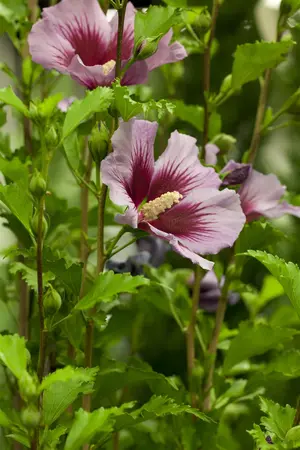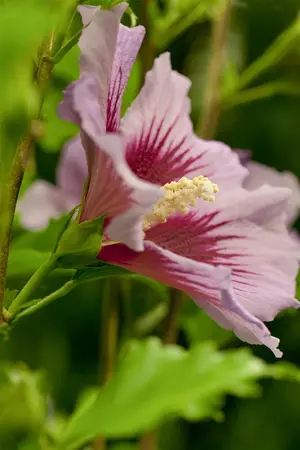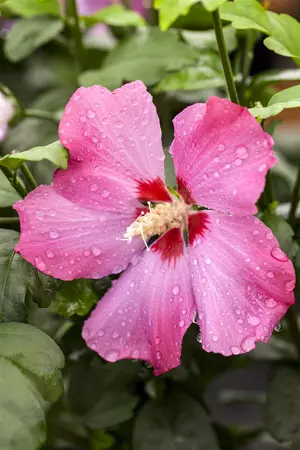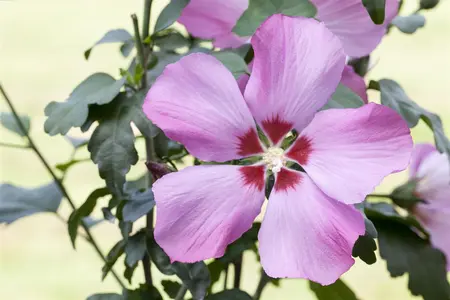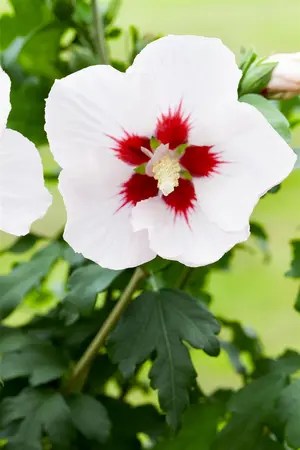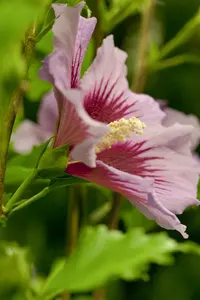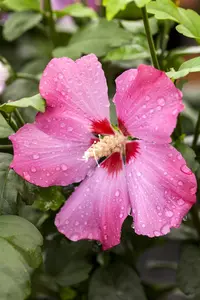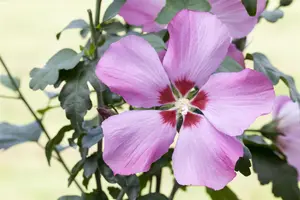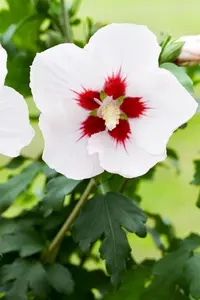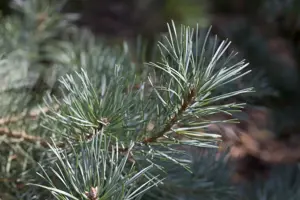Hibiscus syriacus - 30 CM STEM C3
Hibiscus syriacus - 30 CM STEM C3
Description
The Rose of Sharon (Hibiscus syriacus) is an upright shrub that produces purple, red, blue or white, cup-shaped flowers. They appear from July to September. The Rose of Sharon also has egg-shaped, medium green leaves. Its bark is grey. In a sunny to semi-shady, wind-protected location with well-drained, nutrient-rich soil, it usually reaches a height of around 3 metres and grows to around 1.5 metres wide.
Bulletpoints
* the flowers are heavily favoured by bees, bumblebees and hoverflies
* attractive yellow autumn colouring
* easy to care for
* Resistant to urban climates, heat-loving, can be partially built over
Leaves
The deciduous leaves of the Rose of Sharon are medium green, ovate, alternate, lobed. Rose of Sharon is bright yellow in autumn.
Bark
Grey bark makes this plant an eye-catcher in any garden.
Spread
China to India.
Frost hardiness
The Rose of Sharon has good frost hardiness.
Growth
Rose of Sharon is an upright-growing shrub. It usually reaches a height of 1.5 - 3 m and is approx. 1 - 1.5 m wide.
Water
The plant has a medium water requirement.
Location
Preferred location in a sunny to semi-shady, wind-protected position.
Soil
Normal soil.
Planting time
Container plants can be planted all year round, except when the ground is frozen and in summer heat (over 30°C).
Planting partner
The Rose of Sharon sets beautiful accents together with:
Summer lilac, pink weigelie.
Tasks
- Fertilise: Monthly from April to August
- Apply compost: In the period from November to December.
Care
- Over time, the soil loses some important properties. The plants should therefore be transplanted into a larger pot with fresh container plant soil every two years in spring.
- Frozen shoots should be cut back to the healthy wood as soon as there is no longer any risk of frost.
- A slow-release fertiliser can be used in spring. This releases the nutrients slowly and continuously so that the plant is evenly supplied over a longer period of time.
- Watering less frequently, but thoroughly and thoroughly, encourages the plant roots to penetrate deeper into the soil. This enables the plant to survive dry periods better.
Flower
The purple, red, blue, white, cupped flowers appear from July to September.
Use
Park, bee pasture, small/front garden
Root
Hibiscus syriacus is a heartroot.
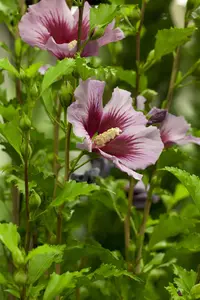
- Article number2000
-
EAN codeHISYRIAC-2030STAMC3
- Latin nameHibiscus syriacus
- catalogLandscape shop

